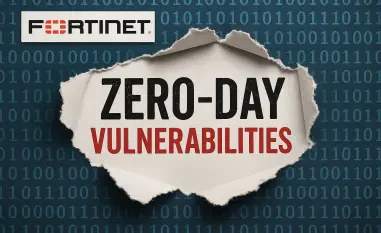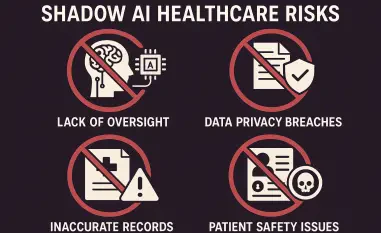In the rapidly evolving realm of cybersecurity, Malik Haidar stands out as a beacon of expertise, combining his analytical prowess with a keen understanding of the business implications of cybersecurity threats. In today’s discussion, we delve into the current landscape of ransomware attacks, exploring the factors behind recent trends, major players influencing the scene, and the intersection of technology and security that shapes the industry’s future.
Can you explain the trend of declining ransomware attacks over the past three months, particularly in May 2025?
Ransomware attacks experienced a global decline for the third month straight, including in May 2025. This downward trend reflects some underlying dynamics within the cybercriminal landscape. Infrastructure issues among major groups and the strategic shifts in attack targets might have played significant roles.
What factors contributed to the significant decline in ransomware attacks in April compared to March?
The decline observed in April was quite marked, and one of the main contributing factors was the infrastructure outages that the RansomHub gang faced. When a prominent group experiences technical difficulties, it can certainly ripple across the attack landscape, temporarily reducing the overall number of incidents.
How did infrastructure outages experienced by the RansomHub gang impact the overall ransomware activity?
These outages affected RansomHub’s operational capacity, leading to a temporary dip in their activity. When a large player in the ransomware space encounters challenges, it can lead to a broader decline in attacks, at least until they resolve their issues or competitors ramp up their efforts to fill the gap.
Despite the overall decline, why has the retail sector experienced heavy targeting by ransomware groups?
Retail remains an attractive target due to the wealth of consumer data and transaction information that is enticing for cybercriminals. Despite a general reduction in ransomware attacks, the retail sector’s vulnerability lies in its expansive and often dispersed network systems, making it easier for sophisticated attackers to exploit.
How did the number of ransomware attacks in the ‘consumer directory’ industry change from April to May?
In the consumer directory industry, incidents significantly increased from 73 in April to 102 in May. This spike suggests a focused interest by ransomware groups to exploit sectors where consumer data and retail transactions can be leveraged for maximum gain.
What are the implications of the continued attacks on high-profile retailers, especially regarding consumer security?
The ongoing targeting of well-known retailers poses a substantial risk to consumer security. When these entities are breached, sensitive consumer data can be exposed, leading to wider consequences such as identity theft and eroded trust in these brands. Retailers must prioritize safeguarding their systems to prevent severe reputational damage and protect their customers.
Can you describe the Scattered Spider hacking collective and discuss its association with attacks on major UK retailers?
The Scattered Spider hacking collective gained notoriety following its involvement in cyber incidents against UK retailers like Marks & Spencer, The Co-op, and Harrods. As a well-organized group, their operations manage to align with sophisticated methodologies that exploit specific vulnerabilities within these large retail infrastructures.
What strategies might retailers like Adidas, Victoria’s Secret, and Cartier employ to strengthen their cybersecurity measures?
To bolster cybersecurity, these retailers could invest in advanced threat detection systems that utilize AI for identifying potential breaches early on. Additionally, they should focus on employee training to increase awareness about phishing and social engineering attempts, alongside implementing stringent access controls and frequent security audits.
Can you tell us more about the emergence of Safepay as the most active ransomware group in May?
Safepay emerged as a formidable force, conducting 70 attacks in May, marking its first appearance among the top ransomware groups. This rise is significant as it indicates a possible rebrand and consolidation of forces from other well-established threat actors, leveraging collective resources and expertise.
How does the rebranding theory explain Safepay’s ability to carry out high-volume and rapid attacks?
Rebranding allows experienced groups like Safepay to shed past identities and leverage their established infrastructure under a new name. This shift enables them to hit at scale swiftly due to their operational experience and possibly enhanced techniques or alliances.
What are the potential challenges that arise with the emergence of new threat actors in the ransomware landscape?
The emergence of new threat actors like Safepay introduces several challenges, including an increase in attack sophistication and unpredictability. As these groups explore novel methods, defenders in cybersecurity must stay agile to understand and counteract their tactics effectively, often requiring enhanced intelligence and adaptive strategies.
In terms of geographic impact, which regions were most targeted by ransomware groups in May?
In May, North America bore the brunt of ransomware attacks, capturing 50% of the global attempt, followed by Europe, Asia, and South America. Such targeting patterns may relate to the maturity of these markets and the potential for lucrative data among established business networks.
Is there any information on why North America was heavily targeted in these ransomware assaults?
North America’s prominence in global commerce and technology might be a driving factor behind its targeting. The region represents a high-value target with businesses often holding substantial caches of data ripe for exploitation, making it a prime focus for ransomware groups seeking financial gain.
According to the findings, what should the focus be for improving cybersecurity efforts given the seasonal fluctuations and rise of new threats?
Efforts should concentrate on enhancing predictive threat intelligence to anticipate attacks during seasonal fluctuations. With groups like Safepay emerging, businesses must continually adapt their cybersecurity frameworks, focusing on resilience and proactive defenses against evolving tactics.
How do critical vulnerabilities in AI factor into the current and future ransomware landscape?
AI vulnerabilities pose a growing concern, as many cybersecurity solutions rely on AI to automate threat detection and response. Exploiting these weak points could allow attackers to bypass advanced defenses. It’s crucial to fortify AI systems to ensure they remain robust against interceptions while maintaining their efficiency.
Do you have any advice for our readers?
My advice would be to remain vigilant and informed about potential threats. Whether you’re a business or an individual, make sure to keep your systems updated, employ strong passwords, and always be cautious of unsolicited communications that could be phishing attempts. Protecting yourself is an ongoing challenge, but with awareness and proactive steps, you can mitigate many risks.













